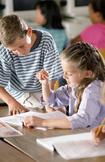Controversy: open schools or close schools?
Politicians should react now to slide unprepared into a forced closure. This requires more comprehensive approaches
The next Corona Round between the Chancellor and the Prime Ministers of the Länder is scheduled for Monday. One important question is likely to be whether or not schools should continue to remain almost completely open or not. No matter what the decision is, politicians will be caught between the two fronts and will have to offer parents more comprehensive concepts than they have done so far: if they decide to keep open, they risk not only the continued protest of parents (and teachers' associations), but possibly increasingly also the health of pupils and parents. If it decides in favour of the change model or even for renewed school closures, it risks the intensified protest of parents who want to keep the schools open without restrictions or at least partially. It will also be confronted with a lack of concepts for reconciling work and family life and for digital teaching, including the insufficient digitisation of schools, teachers and pupils. It will only be able to avoid a large-scale storm of protest if comprehensive and well thought-out solutions are offered at short notice.
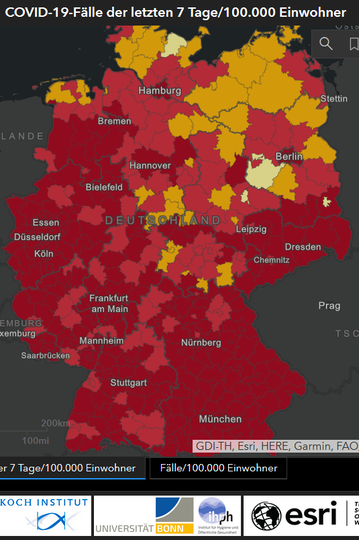
The starting point: The current infection situation
Nationwide, the infection rates are high and all West German states as well as Berlin and Saxony are - metaphorically speaking - almost completely in the red, i.e. they had at least 51 new cases per 100,000 inhabitants in the last 7 days. Only in the eastern German states of Brandenburg and Mecklenburg-Western Pomerania and in Schleswig-Holstein are there still larger areas where the incidence is below 50 cases per 100,000 inhabitants. In other federal states the incidence is only sporadic.
The incidence of infection is also rising sharply among children and adolescents, even though the levels are still - and in smaller children: significantly - lower than in adults (The incidence of infection is also rising sharply among children and adolescents, even if the values are still - and in smaller children: significantly - lower than in adults). The frequency of infection among children and adolescents follows the development of 20 to 49-year-old adults with an interval of one to two weeks. This means that in one to two weeks, as many children per 100,000 children in the corresponding age group will be infected as there are adults today.
Political decisions
At the end of October, the Chancellor and the Prime Ministers of the Länder decided that the schools should remain open as long as possible. Particular emphasis was placed on the issues of reconciling family and career and the impact on companies if children and young people had to be looked after at home again. This would mean that parents would be increasingly unable to work. Reference was also made to the educational and socio-political consequences of the first lockdown, when many children and young people learned significantly less than in normal face-to-face teaching.
In addition, ministries of education and cultural affairs and state governments already defined step-by-step plans in the summer as to how they would react to the expected renewed rise in infection figures. If the incidence is low, teaching should take place within the normal framework, and if the incidence rises, the risk to children and teachers should be kept as low as possible by means of shock ventilation, compulsory masks (for different age groups). In the case of high exposure, instruction should then take place in separate learning groups and/or hybrid instruction. School closures were and are the very last resort.
In principle, these step-by-step plans correspond to the recommendations of the Robert Koch Institute. According to them, classes should be reduced from a regional incidence of at least 50 per 100,000 inhabitants. Furthermore, it should be examined whether a short-term school closure is necessary, if necessary for all age groups..
If policymakers were to follow their own step-by-step plans or the recommendations of the RKI, schools would now have to operate almost nationwide at least in alternating mode with smaller classes, if not be largely closed. Instead, it is regularly stressed that schools are not pandemic drivers or hotspots. At least the RKI apparently no longer fully shares this assessment.
Corona in everyday school life
In everyday school life, the current incidence of infection leads to individual pupils (or teachers), but also whole groups or classes or even schools being temporarily quarantined. According to current Press reports, over 300,000 pupils and 30,000 teachers are said to be in quarantine. That would be about 3% of the students and 4% of the teachers. Whether these figures are correct, however, cannot be verified - due to a lack of transparency in some countries. There are those who think these figures are too high.
From federal states where parents can decide whether or not their children go to school, it was reported at times that over 95 percent of the pupils were present.
It remains unclear whether or not the students affected by quarantine or other corona-induced teaching failure will have digital lessons during this time. If not, the learning risk is individualized and unfair conditions are created - something that ministers of education want to avoid and why the changeover to alternating lessons, which is actually necessary due to the infection, has already been prevented. The injustice would be particularly great if final exams were due at the end of this school year. After all, many pupils without a school-leaving certificate already have great problems making the transition to qualified training (After all, many pupils without a school-leaving certificate already have major problems making the transition to qualified training). The current situation will exacerbate this problem, especially for young people from socially weaker families. They threaten to become the Corona generation.
The question is why politicians are not following their own guidelines more consistently here.
Parental interests in conflict
Parents react to the current situation with very different and sometimes polarizing demands: The Survey of the parents' hotline has made clear how divided parenthood is at present. On the one hand, there are the parents who are fighting to keep schools open and schools at all costs. They feel that the incidence among children and some young people is so low that there is no reason to close schools. Some even demand that children should not have to wear masks if possible.
Beyond these two points, about which - just as about other assessments or views - one can of course argue splendidly, many - probably: most - parents have experienced the great strain during the first comprehensive lockdown at first hand and are afraid that it will be repeated.
On the other hand, there are parents who press for school closure as soon as possible because the incidence is too high overall and the health risk for their children is too great. According to their ideas, schools should only reopen once the incidence of infection has calmed down.
Both the parents at the two opposing views and those who position themselves in between evaluate the current events and the consequences for themselves and their children very differently. Their often very different framework conditions (living in a partnership or married, single parent; work situation and distribution between persons, etc.) play just as much a role as their assessment of the health risk to their children and themselves.
Education and/or health
In addition to the effects on the compatibility of family and work and on the health risk, the effects of a potential lockdown on the school performance or learning development of the children also play an important role in the respective assessment of parents, pupils, politicians etc.
Both educational researchers and journalists highlight the negative consequences of potential school closure, on different empirical bases and assessments. Even though much of the content and empirical evidence is in principle understandable, the view of learning processes sometimes seems somewhat technocratic or old-fashioned. Also, the role of the (German) school system, which is not very sustainable, seems to be somewhat overestimated for the future path of life.
Another risk of complete and long-term school closure is the lasting isolation of children and adolescents, as they no longer see their classmates and friends, or see them only rarely. Even with today's children and adolescents, virtual contact is often only a poor substitute for personal contact. Rarely have so many children looked forward to school again as after the last lockdown.
From both education and health policy points of view, alternating teaching - also called hybrid model or hybrid teaching - could be a good compromise. It combines learning and regular contact with the reduction of health risks for pupils, teachers and also parents. In this alternating model, classes are divided in order to increase the sitting distance between pupils and reduce the risk of infection. At the same time, the learning process takes place partly in the learning group and partly at home - the alternating model combines the positive characteristics of face-to-face and classroom teaching with project-oriented and individualized learning.
Why do politicians not act consistently?
There are, however, two crucial "weaknesses": Firstly, in both hybrid and distance learning, much depends on the technical infrastructure and digital literacy of students and teachers. However, German education policy has not only failed in recent years, but especially in recent months, to create the appropriate technical and (media) pedagogical prerequisites. Hardly any investments have been made in infrastructure or new terminal equipment for teachers and pupils, and there has been hardly any further training for teachers. Instead, it was always just said how much money one wanted to spend, that this has mostly not been spent so far. Unfortunately, it has to be said that progress is frighteningly slow. Also and especially in view of a foreseeable pandemic this autumn.
And it is precisely this small amount of progress that is now falling on the feet of the ministries of education: they must in fact stick to face-to-face teaching, because neither schools nor teachers or even pupils from disadvantaged families have been sufficiently empowered to implement more digitally oriented teaching. This is especially true for the types of schools beyond the grammar school.
Secondly, even the change of classes cannot easily be reconciled with the professional requirements of the parents. Younger children in particular cannot stay at home unsupervised. Here too, the failures of recent months are falling on the feet of politicians.
Politicians must act now - if they want to avoid greater damage
In my estimation, the infection rates among children and adolescents will remain high, if not rise further. The current trend is unlikely to be reversed in the short term or to level off to such an extent that schools can continue to operate in normal mode. The political pressure is likely to become too strong at the latest when the first schools have become a "real hotspot" or when the mark of 200 or 250 infected children per 100,000 is exceeded.
Policymakers should therefore implement the change model in all schools and at the same time introduce a corona parental allowance for parents (parts of parents) who have to reduce working hours due to school closure. This corona parental allowance should largely compensate for the wage gap and not be based on the regulations of the short-time work allowance or similar. This limited reduction in working time keeps parents, and especially mothers, in the work process and (hopefully) prevents employers from falling back into old patterns and discriminating against women in hiring.
Published on
Topics
Articles on the topic
-
How do I find a school place for my child?
Depending on the state and type of school, different things need to be...

-
Childcare - how does it work in Germany?
The path from application to daycare place is simple and complicated at...
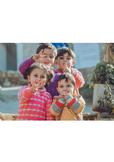
-
Corona pandemic severely disadvantages children and young people - but there is no "Corona generation"
This is a core finding of the anthology "Generation Corona? How young...
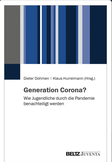
-
What to do after the Easter holidays? - Part 2: Final exams
An overview of the regulatory diversity
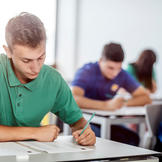
-
Kitas and schools in a state of flux
Update from 9.4.2021 on the current regulations
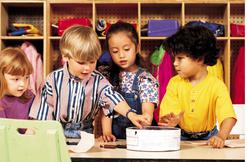
-
What happens after the Easter holidays?
Part 1 - Kitas and schools: open or closed?
